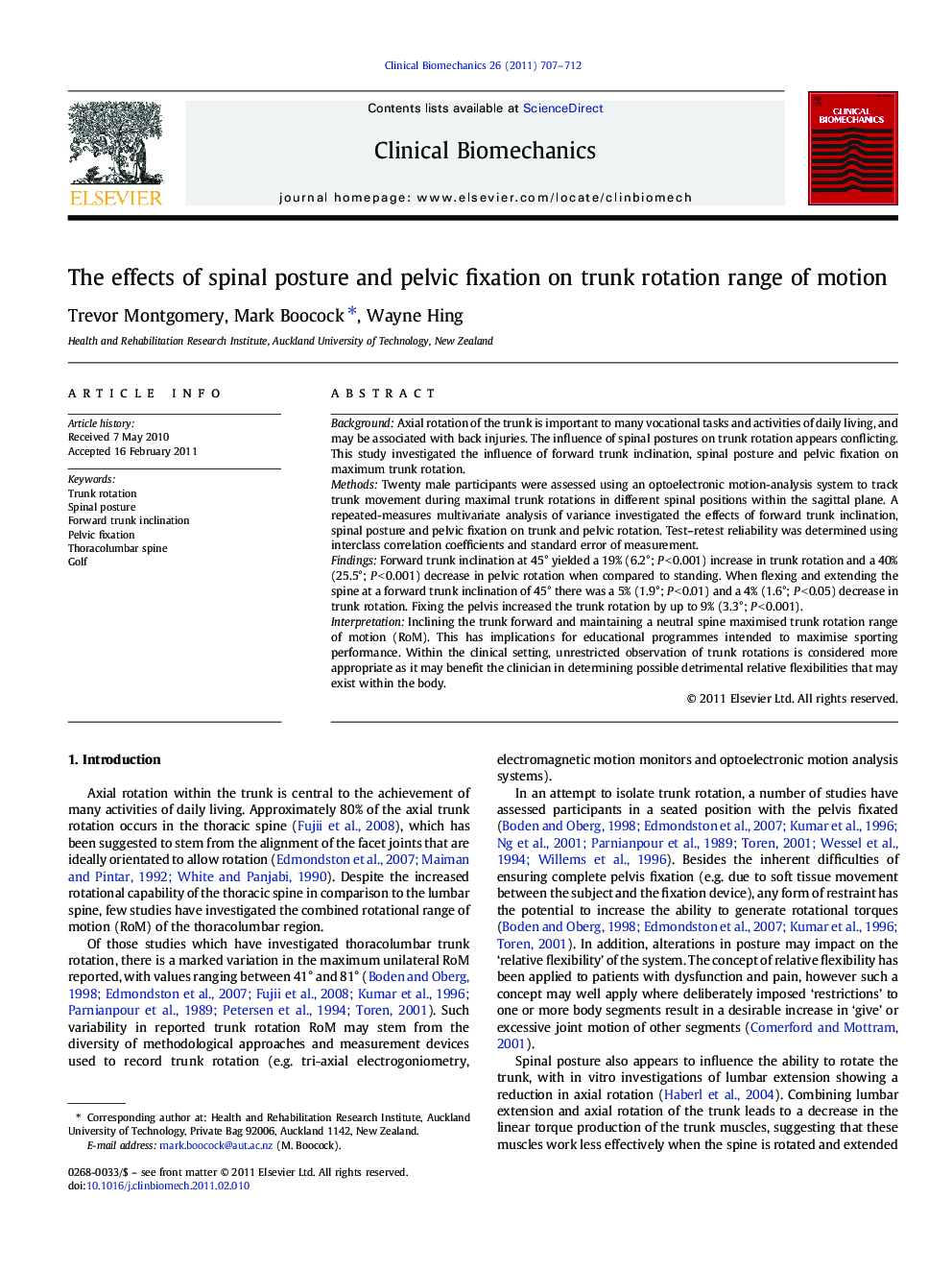| کد مقاله | کد نشریه | سال انتشار | مقاله انگلیسی | نسخه تمام متن |
|---|---|---|---|---|
| 4050716 | 1264954 | 2011 | 6 صفحه PDF | دانلود رایگان |

BackgroundAxial rotation of the trunk is important to many vocational tasks and activities of daily living, and may be associated with back injuries. The influence of spinal postures on trunk rotation appears conflicting. This study investigated the influence of forward trunk inclination, spinal posture and pelvic fixation on maximum trunk rotation.MethodsTwenty male participants were assessed using an optoelectronic motion-analysis system to track trunk movement during maximal trunk rotations in different spinal positions within the sagittal plane. A repeated-measures multivariate analysis of variance investigated the effects of forward trunk inclination, spinal posture and pelvic fixation on trunk and pelvic rotation. Test–retest reliability was determined using interclass correlation coefficients and standard error of measurement.FindingsForward trunk inclination at 45° yielded a 19% (6.2°; P < 0.001) increase in trunk rotation and a 40% (25.5°; P < 0.001) decrease in pelvic rotation when compared to standing. When flexing and extending the spine at a forward trunk inclination of 45° there was a 5% (1.9°; P < 0.01) and a 4% (1.6°; P < 0.05) decrease in trunk rotation. Fixing the pelvis increased the trunk rotation by up to 9% (3.3°; P < 0.001).InterpretationInclining the trunk forward and maintaining a neutral spine maximised trunk rotation range of motion (RoM). This has implications for educational programmes intended to maximise sporting performance. Within the clinical setting, unrestricted observation of trunk rotations is considered more appropriate as it may benefit the clinician in determining possible detrimental relative flexibilities that may exist within the body.
Journal: Clinical Biomechanics - Volume 26, Issue 7, August 2011, Pages 707–712